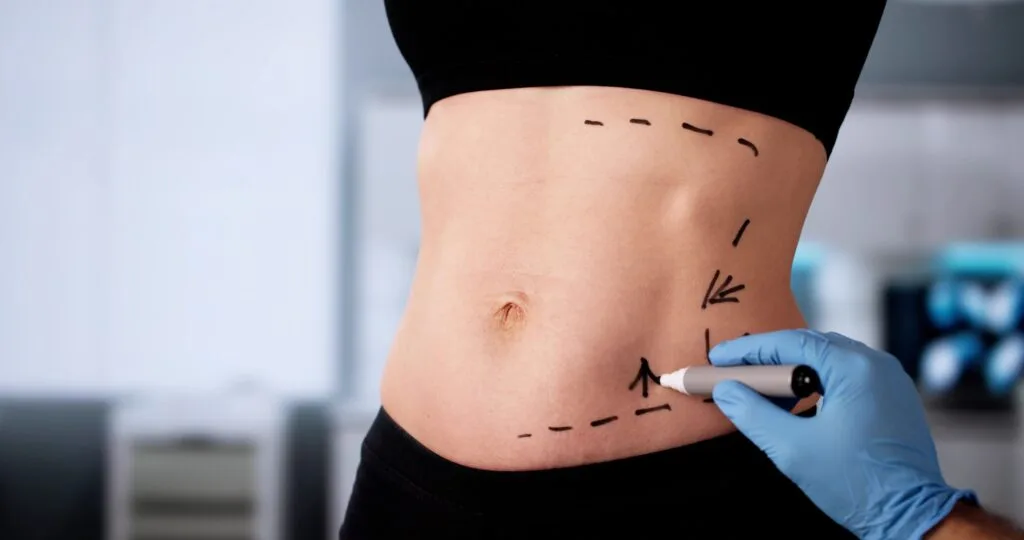
Liposuction typically involves moderate discomfort rather than significant pain, with most patients rating their experience as tolerable. During the procedure, you’ll feel nothing due to anesthesia. The first 2-3 days of recovery generally bring some discomfort, characterized by soreness, bruising, and a sensation similar to post-workout muscle strain. These symptoms gradually subside over 1-2 weeks, with most patients returning to normal activities within 7-10 days. Mild tenderness may persist for up to six weeks.
During Preparation
During Liposuction Surgery
Immediate Post-Operative Experience
Initial Recovery Process (First Two Days)
First Week of Recovery
Weeks 2-6 of Recovery
Long-Term Healing Process
The volume of excess fat extracted during liposuction directly correlates with post-operative pain intensity. Surgeons typically limit fat removal to about 5 liters per session for safety reasons, but procedures approaching this limit generally result in more significant recovery discomfort. Removing larger amounts requires more aggressive movements of the cannula beneath the skin, creating more trauma to surrounding tissues and consequently increasing pain and recovery time.
Certain health conditions can amplify post-liposuction pain or complicate recovery. Inflammatory disorders like fibromyalgia or autoimmune conditions may intensify swelling and pain responses. Patients with poor skin elasticity or stretch marks might experience different sensations during healing as tissues adjust. Circulatory issues can slow healing and prolong discomfort, while diabetes may impact nerve sensations and recovery timeline, making a comprehensive pre-surgical medical evaluation essential.
Adherence to post-surgical instructions significantly influences pain levels during recovery. Compression garments reduce swelling and support treated areas, minimizing discomfort. Following activity restrictions prevents strain on healing tissues. Taking pain medication as prescribed, rather than waiting until pain becomes severe, helps maintain comfort more effectively. Patients who follow all post-operative guidelines typically report more manageable pain levels and smoother recovery than those who deviate from recommended care protocols.
Tumescent liposuction involves injecting a solution that numbs the area and shrinks blood vessels before fat cells are suctioned away, resulting in moderate post-operative discomfort lasting 5-7 days. Most patients describe the sensation as soreness rather than sharp pain, with peak discomfort occurring 2-3 days after surgery. The tumescent technique reduces pain compared to older methods by minimizing trauma to surrounding tissues.
UAL uses ultrasonic vibrations to liquefy fat before removal, causing much less pain than traditional methods. Patients typically experience moderate soreness for 3-7 days, with the ultrasound energy helping to remove fat while creating a more precise result. Some patients report a warm sensation in the treated area during recovery alongside the typical pressure and bruising discomfort.
SmartLipo generally offers one of the least painful recovery experiences, with most patients reporting mild to moderate discomfort for just 3-5 days. The laser energy simultaneously melts fat and coagulates blood vessels, reducing bruising, swelling, and post-operative pain. Many patients can return to desk work within 3 days and require minimal pain medication beyond the first 48 hours.
PAL utilizes a rapidly vibrating cannula to break up fat deposits, resulting in a recovery pain profile similar to tumescent techniques but with potentially less tissue trauma. Patients experience moderate discomfort for 4-7 days, with tightness and pressure sensations more common than sharp pain. Mechanical assistance allows for a gentler fat removal process with less force, which can translate into a somewhat easier recovery.
At Expert BodySculpt, our comprehensive body contouring procedures combine VASER and power-assisted liposuction technologies for superior fat removal with minimal discomfort. We use only local anesthesia, allowing for faster recovery while maintaining your comfort throughout the surgery. For patients who want to treat excess skin after fat removal, we offer innovative Renuvion procedures that tighten and rejuvenate skin during the same session, creating more defined, natural-looking contours with a single recovery period.